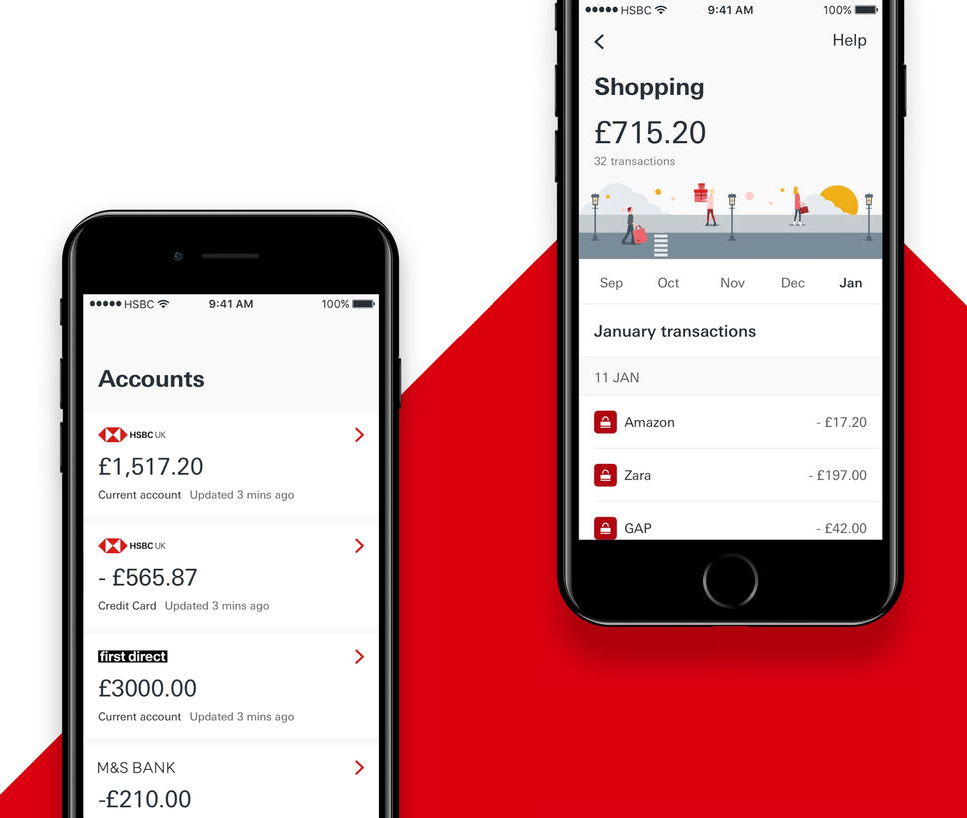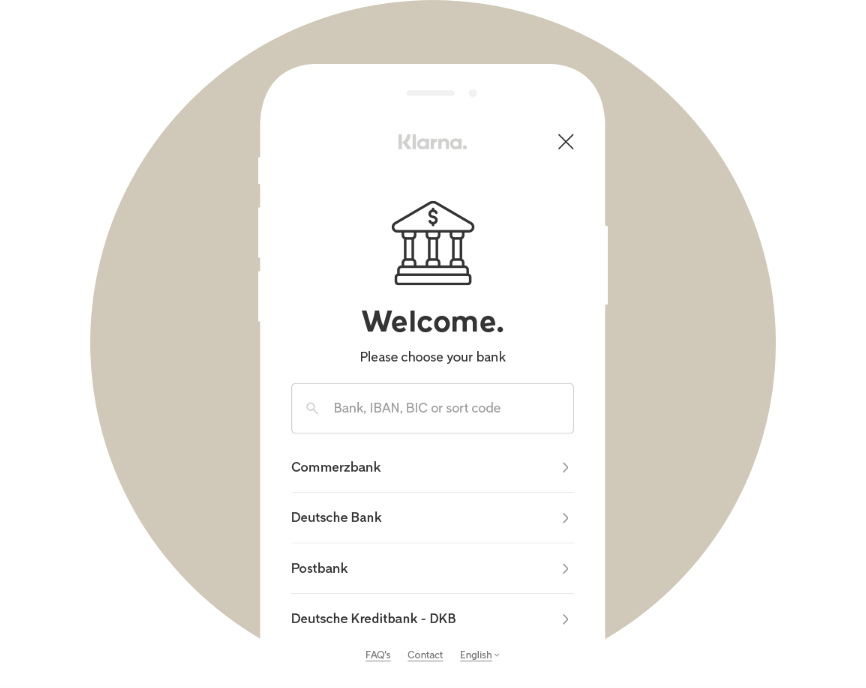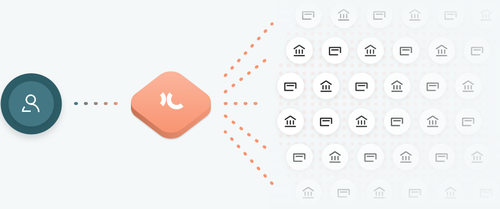Carding Forum
Professional
- Messages
- 2,788
- Reaction score
- 1,305
- Points
- 113
Which European banks and fintech companies are switching to open banking, what are expected from their projects, and why the implementation of the directive is a controversial and complex initiative
How startups and banks are switching to PSD2.
The PSD2 directive promotes the idea of open banking. Its main goal is to simplify access to financial services and increase competition in the financial services market. In simple words - to make it possible to manage accounts in different banks from one application. And also plan your budget and choose suitable loan conditions, without worrying that “sensitive” financial data may suffer in the process.
In September 2021, the deadline will come, by which financial institutions must have time to bring their activities in line with the directive. Consider which companies did switch to the new standard.

In the HSBC application, you can view accounts in different banks.
During the year, the application managed to attract 300 thousand customers. Overall, consumer response was positive.
We found that aggregation itself is not so attractive. Connected Money customers love the ability to get more information about their spending and truly experience the benefits of financial coaching.
For example, in the application you can categorize your expenses, find out how much money is left after paying bills, and get financial advice.
In the long term, HSBC will expand its range of partners. The possibility of using customer data and artificial intelligence to expand access to credit is also being considered.
I think the long-term vision of the banking sector as a whole is to provide contextual access to credit, not tied to products per se. This can be done with open banking and AI.
Payment service provider Klarna announced the launch of its own Open Banking platform in March 2021.

Choosing to pay with Klarna, the client can choose from which account to write off funds
The Klarna solution allows merchants at the checkout stage to access the consumer's bank account and initiate a transfer after the client enters the password for his account in the appropriate field. This platform will provide access to more than 4300 European banks via API.
The founder and CEO of Klarna believes that now there are all the prerequisites for the massive introduction of open banking.
We see that consumers are ready to switch, and this is much easier today. This means that if any player does not provide the consumer with valuable services, he will go to competitors in a second. This is an unprecedented situation in the banking market and will generate a lot of excitement.
Swedish startup Tink has been embodying open banking standards since 2013, well before the PSD2 directive came into force.

At first, it was a financial application for consumers, which combined bank accounts from different financial institutions in one interface. Later, the company reoriented itself to the b2b segment, allowing banks and fintech startups to integrate this solution into their applications.
More than 1400 developers from hundreds of banks and financial institutions in Europe (including NatWest, BNP Paribas, Nordea) use the Tink API platform to access financial data. Tink provides aggregation of accounts of various financial institutions, payment initiation, personal finance management and data collection. For example, the last two features will be integrated into the NatWest mobile banking app. Based on the history of customers' transactions, the bank will be able to offer personalized insights into spending.
In early June 2019, the startup raised a $ 11.2 million investment from PayPal.The payment giant plans to use Tink to make it easier for new customers to connect their bank accounts to their PayPal accounts. Also, the solution can be used to analyze transactions when making a decision on lending to a borrower.
PSD2 levels the playing field by democratizing access to consumer financial data and allowing new entrants to enter the market. However, there are many challenges in the short term. Finding the right talent, modernizing IT systems and meeting regulatory requirements are the biggest challenges facing open banking.
The implementation of PSD2 implies that banks will comply with a number of regulatory requirements. They must create mechanisms that allow third-party providers to safely, reliably and quickly operate banking services and data with the consent of their customers. This may be due to technological difficulties. Ideally, banks should completely rethink their existing technological background. And create a transparent system that would meet all the requirements of open banking. But this is impossible, because you need to continue serving customers using existing systems. Therefore, modernization often occurs in parallel, leaving consumers and bank employees in the dark.
Also, the development of the trend is affected by the regulation of the industry, which tends to tighten. After all, if the PSD2 directive ultimately implies the opening of data and new opportunities for integration, then the requirements of other departments make financial institutions more closed. For example, new anti-money laundering requirements and deoffshorization are forcing banks to implement stricter customer checks. And refuse to open accounts for companies from all over the world. Therefore, banks may deliberately pay less attention to open APIs, justifying this by the fact that they risk violating compliance and risk protection policies.
Also, the transition to open banking requires a more responsible approach to data security. Indeed, by opening the API, banks allow fintech startups to gain access to their clients' data. Of course, this happens with their consent and is governed by the EU data protection regulation - GDPR. However, this regulation is no less complex than the PSD2 directive itself. Even one year after the entry into force, not all companies covered by this requirement understand the implications.
A survey of the law firm Paul Hastings of the world's largest companies showed that only 43% of them have already managed to create an internal team to implement the GDPR norms. Not to mention really bringing all business processes in line with it.
Finally, European financial institutions view Open Banking as the biggest current threat to their business model . 56% fear that open banking will significantly reduce consumer loyalty to banks. After all, they will have the opportunity to choose between a bank and a fintech startup, which is often ready to offer a more flexible and cheaper service.
PSD2 standards are developed by working groups - the fintech market. That is, representatives of fintech and the National Bank should sit down at the negotiating table and create standards by which it will be convenient for everyone to work. The NBU, as a regulator, will determine the basic things, but which path other market participants will take remains an open question for us.
The problem with technical specialists is also relevant for our market.
Banks don't have an API culture. In fact, there should be one department that deals with development and support. Alas, very few people work in banks today who have a technical background. Therefore, they do not understand how to implement certain technologies. Hence, there is such a large gap in the development of innovations in many banks in Ukraine.
However, there are already open banking initiatives on the market. For example, in June, Ukrainian mobile monobank opened an API for third-party developers.
Imagine that there is a service that does advanced analytics on your card transactions. This service now has the ability to ask you for permission to access your statement.
Despite the difficulties in introducing open banking, 77% of financial companies consider it to be one of the most radical changes in the modern world of financial services.
How startups and banks are switching to PSD2.
The PSD2 directive promotes the idea of open banking. Its main goal is to simplify access to financial services and increase competition in the financial services market. In simple words - to make it possible to manage accounts in different banks from one application. And also plan your budget and choose suitable loan conditions, without worrying that “sensitive” financial data may suffer in the process.
In September 2021, the deadline will come, by which financial institutions must have time to bring their activities in line with the directive. Consider which companies did switch to the new standard.
How is open banking implemented?
A year ago, UK-based HSBC launched the Connected Money app, which allows its customers to view account information at 21 banks, including Santander, Lloyds and Barclays.
In the HSBC application, you can view accounts in different banks.
During the year, the application managed to attract 300 thousand customers. Overall, consumer response was positive.
We found that aggregation itself is not so attractive. Connected Money customers love the ability to get more information about their spending and truly experience the benefits of financial coaching.
For example, in the application you can categorize your expenses, find out how much money is left after paying bills, and get financial advice.
In the long term, HSBC will expand its range of partners. The possibility of using customer data and artificial intelligence to expand access to credit is also being considered.
I think the long-term vision of the banking sector as a whole is to provide contextual access to credit, not tied to products per se. This can be done with open banking and AI.
Payment service provider Klarna announced the launch of its own Open Banking platform in March 2021.

Choosing to pay with Klarna, the client can choose from which account to write off funds
The Klarna solution allows merchants at the checkout stage to access the consumer's bank account and initiate a transfer after the client enters the password for his account in the appropriate field. This platform will provide access to more than 4300 European banks via API.
The founder and CEO of Klarna believes that now there are all the prerequisites for the massive introduction of open banking.
We see that consumers are ready to switch, and this is much easier today. This means that if any player does not provide the consumer with valuable services, he will go to competitors in a second. This is an unprecedented situation in the banking market and will generate a lot of excitement.
Swedish startup Tink has been embodying open banking standards since 2013, well before the PSD2 directive came into force.

At first, it was a financial application for consumers, which combined bank accounts from different financial institutions in one interface. Later, the company reoriented itself to the b2b segment, allowing banks and fintech startups to integrate this solution into their applications.
More than 1400 developers from hundreds of banks and financial institutions in Europe (including NatWest, BNP Paribas, Nordea) use the Tink API platform to access financial data. Tink provides aggregation of accounts of various financial institutions, payment initiation, personal finance management and data collection. For example, the last two features will be integrated into the NatWest mobile banking app. Based on the history of customers' transactions, the bank will be able to offer personalized insights into spending.
In early June 2019, the startup raised a $ 11.2 million investment from PayPal.The payment giant plans to use Tink to make it easier for new customers to connect their bank accounts to their PayPal accounts. Also, the solution can be used to analyze transactions when making a decision on lending to a borrower.
PSD2 levels the playing field by democratizing access to consumer financial data and allowing new entrants to enter the market. However, there are many challenges in the short term. Finding the right talent, modernizing IT systems and meeting regulatory requirements are the biggest challenges facing open banking.
The complexities of open banking
Despite the fact that new legislation has been discussed for a long time, ordinary people do not understand the essence of the upcoming changes and, at best, received a letter from their bank with incomprehensible information about open APIs. And among financial institutions, not all have implemented the new standards. The study found that 41% of EU banks failed to meet PSD2 conditions.The implementation of PSD2 implies that banks will comply with a number of regulatory requirements. They must create mechanisms that allow third-party providers to safely, reliably and quickly operate banking services and data with the consent of their customers. This may be due to technological difficulties. Ideally, banks should completely rethink their existing technological background. And create a transparent system that would meet all the requirements of open banking. But this is impossible, because you need to continue serving customers using existing systems. Therefore, modernization often occurs in parallel, leaving consumers and bank employees in the dark.
Also, the development of the trend is affected by the regulation of the industry, which tends to tighten. After all, if the PSD2 directive ultimately implies the opening of data and new opportunities for integration, then the requirements of other departments make financial institutions more closed. For example, new anti-money laundering requirements and deoffshorization are forcing banks to implement stricter customer checks. And refuse to open accounts for companies from all over the world. Therefore, banks may deliberately pay less attention to open APIs, justifying this by the fact that they risk violating compliance and risk protection policies.
Also, the transition to open banking requires a more responsible approach to data security. Indeed, by opening the API, banks allow fintech startups to gain access to their clients' data. Of course, this happens with their consent and is governed by the EU data protection regulation - GDPR. However, this regulation is no less complex than the PSD2 directive itself. Even one year after the entry into force, not all companies covered by this requirement understand the implications.
A survey of the law firm Paul Hastings of the world's largest companies showed that only 43% of them have already managed to create an internal team to implement the GDPR norms. Not to mention really bringing all business processes in line with it.
Finally, European financial institutions view Open Banking as the biggest current threat to their business model . 56% fear that open banking will significantly reduce consumer loyalty to banks. After all, they will have the opportunity to choose between a bank and a fintech startup, which is often ready to offer a more flexible and cheaper service.
Open banking in Ukraine
The PSD2 directive does not apply to the Ukrainian market yet. However, the National Bank is already carefully studying and analyzing it. To fully implement the directive, a number of problems must first be solved - to improve payment legislation, to create a common vision of what the regulation of open banking should be.PSD2 standards are developed by working groups - the fintech market. That is, representatives of fintech and the National Bank should sit down at the negotiating table and create standards by which it will be convenient for everyone to work. The NBU, as a regulator, will determine the basic things, but which path other market participants will take remains an open question for us.
The problem with technical specialists is also relevant for our market.
Banks don't have an API culture. In fact, there should be one department that deals with development and support. Alas, very few people work in banks today who have a technical background. Therefore, they do not understand how to implement certain technologies. Hence, there is such a large gap in the development of innovations in many banks in Ukraine.
However, there are already open banking initiatives on the market. For example, in June, Ukrainian mobile monobank opened an API for third-party developers.
Imagine that there is a service that does advanced analytics on your card transactions. This service now has the ability to ask you for permission to access your statement.
Despite the difficulties in introducing open banking, 77% of financial companies consider it to be one of the most radical changes in the modern world of financial services.
